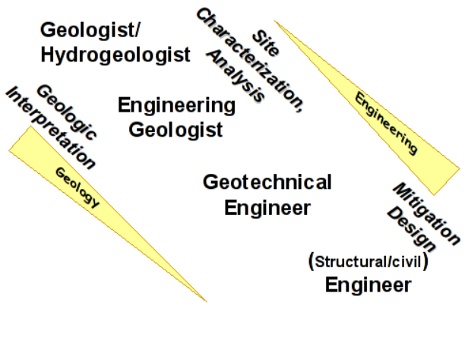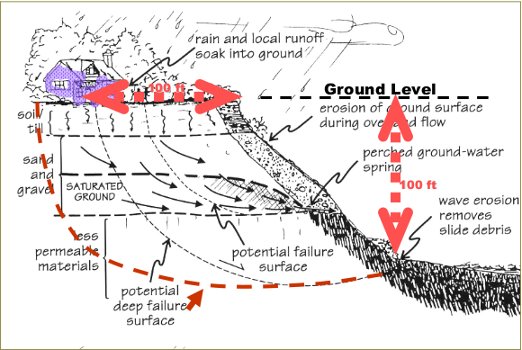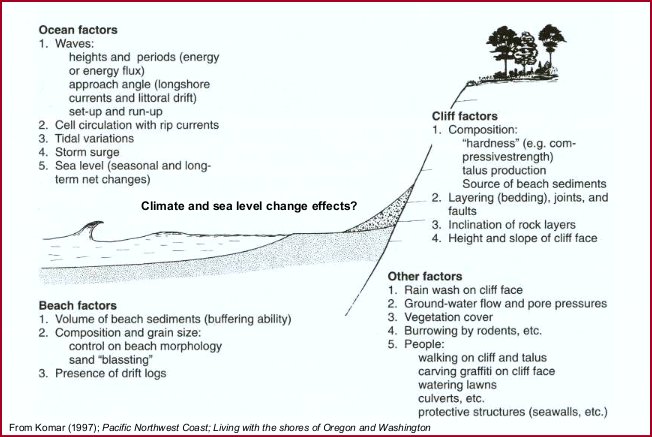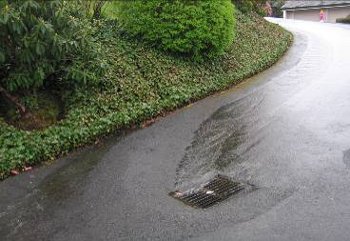Who should you call?

_
You may need to consult with several of these specialists. It will depend on your specific issues. Does your geologic issue involve water, moving or saturated soil and maybe rock, steep slopes, construction in a county-identified "Critical Area"? You may need to make a number of phone calls. When you call a potential consultant, describe your problem thoroughly, explain your concerns, and ask a lot of questions. Find out what experience the consultant has specifically with your issues. Decide from your conversation which is the best fit to address your concerns. Ask what steps they will take in working towards a solution. Ask how soon they can make a site visit. If you can, accompany them during their visit to provide site history and insight. You will end up with a better product.
What is an adequate setback for a steep slope or bluff?

Adapted from sketch by Len Palmer
It depends! Clearly, there are many geologic and hydrologic factors (slope gradient, stratigraphy (nature and relationship of sedimentary layers or bedrock), ground- and surface-water hydrology, human modifications, etc.), to be evaluated and factored into determining the appropriate set-back for the long-term safety of your home or other land uses.
What else should I take into account when building on shoreline property?

Any or all of these factors may affect your site conditions. Gather as much site history as you can, ask questions of neighbors and previous land owners. Look for information resources on line (Washington State Dept. of Ecology is a great place to start), and in local libraries and county offices. Contact specialists with experience in your geographic area.
Where does the water come from and where does it go from here?

_
With the wet winters of the Pacific Northwest we have to contend with landslides and erosion. Appropriate grading and water-management planning can successfully mitigate these hazards. Know your watershed - become familiar with the long-term land-management plans for the sub-basin you live in. Information about the geologic and hydrologic characteristics of your site, stream or shoreline reach, and watershed should be used to inform the development of environmentally-sound, long-term, and low-maintenance plans.